Orginally published on December 20, 2024.
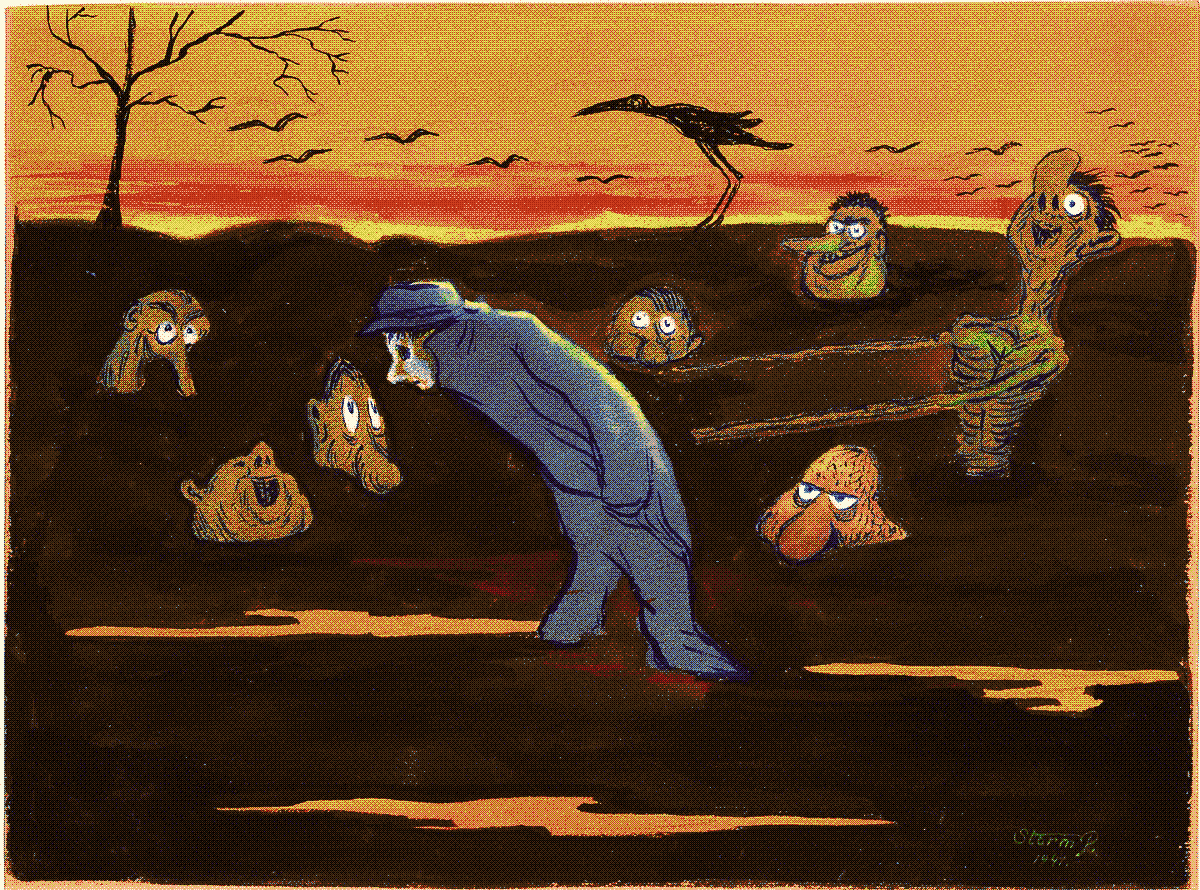
Below is a brief, unedited essay I put together for a couple friends* to introduce the concept of collapse and the reasons I’m convinced that its a process in which we are currently embroiled. While I believe every word of what you’ll read below, I am less convinced that any one essay, video, book—what have you—is enough to convince someone else of this notion.
Essays like the one below may spark one’s journey to collapse awareness, but they shouldn’t be the end of that journey. I will include some accessible articles, videos, podcasts, and book suggestions at the end for the sufficiently engaged to continue this journey.
*This essay was written to introduce the concept of collapse to two close friends. As such, it’s written in an informal, largely conversational manner. If you want a more technical look at collapse, I suggest looking elsewhere. If you want to stick with Substack, The Crisis Report by Richard Crim is a good place to start.
OK, I’ll try to give a brief overview of why I believe the “doom and gloom” surrounding our predicament is justified. Obviously, this won’t be exhaustive. I’ll mainly stick with generalities here. If you want more specific information or sources, I can provide them upon request.
First, while I fear how a second Trump presidency will affect our lives, I do not think it is anywhere close to the worst of our problems. Trump is, at best, a catalyst. His presidency is likely to accelerate the path that we are already on. That path is likely some form of “civilizational collapse.”
Now, I believe it is important to define what I mean by “collapse.” First, collapse is a process, not an event. It is a process that has been in effect since we have been alive on this Earth. Some believe that it began with industrialization, others think it was the Agricultural Revolution, while other others speculate that it began when we ventured out of Africa or even when we came down from the trees. When it started doesn’t really matter. The important thing is that it started and that it will likely continue barring a radical departure from the status quo.
For us, collapse means a steady decline in our material conditions, perhaps followed by a sudden, precipitous decline. The causes are numerous; however, they all stem from our populations’ growth and our increasing levels of consumption. It’s a bit like the boom-and-bust cycle in economics. Periods of rapid growth are followed by periods of rapid decline. Our species, around for some 300 thousand years, did not reach 1 billion until 1804. In a mere 220 years, it octupled to over 8 billion.
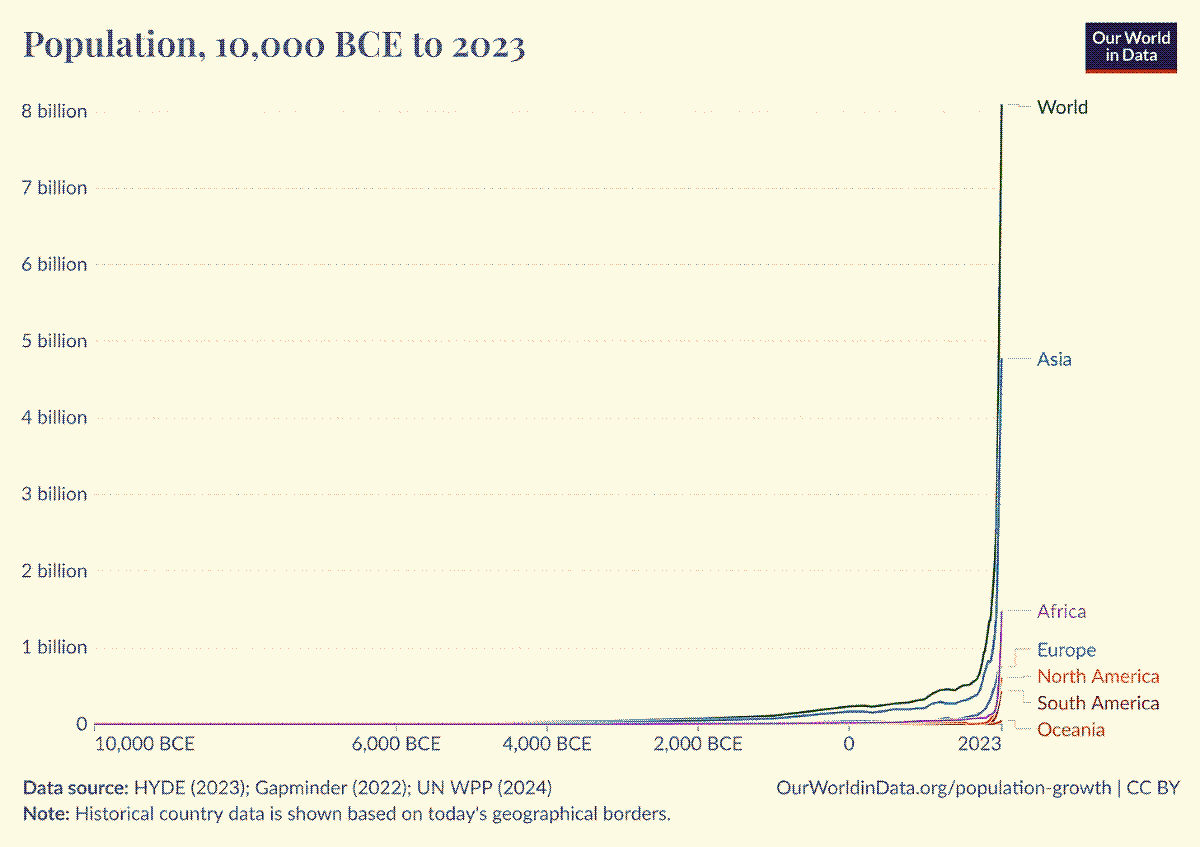
As our population has grown, it has consumed more and more of the Earth’s natural resources. Some of these resources, namely carbon, the fossilized remnants of ancient sunlight, are what allowed us to grow our population exponentially.
Along with that growth in numbers also came a growth in per capita consumption. Those of us in the Global North consume far in excess of what is available to us on this planet. We have overshot Earth’s bounty. I say this being completely guilty of this level of consumption myself. I have altered many of my habits, but my wife and I still live like Americans. We drive carbon-powered cars. We order superfluous gubbins online. We DoorDash meals that come covered in plastic via the same carbon-powered cars. We keep beloved pets who survive thanks to a cruel and carbon-intensive system of mass birth and mass slaughter. Going vegetarian thankfully creates distance between our own consumption and this system, but it doesn’t completely absolve us. We still consume some animal products, not all of which come from local farms. We live in a completely unsustainable manner. A lifestyle that will not and cannot be continued in future generations of humans.
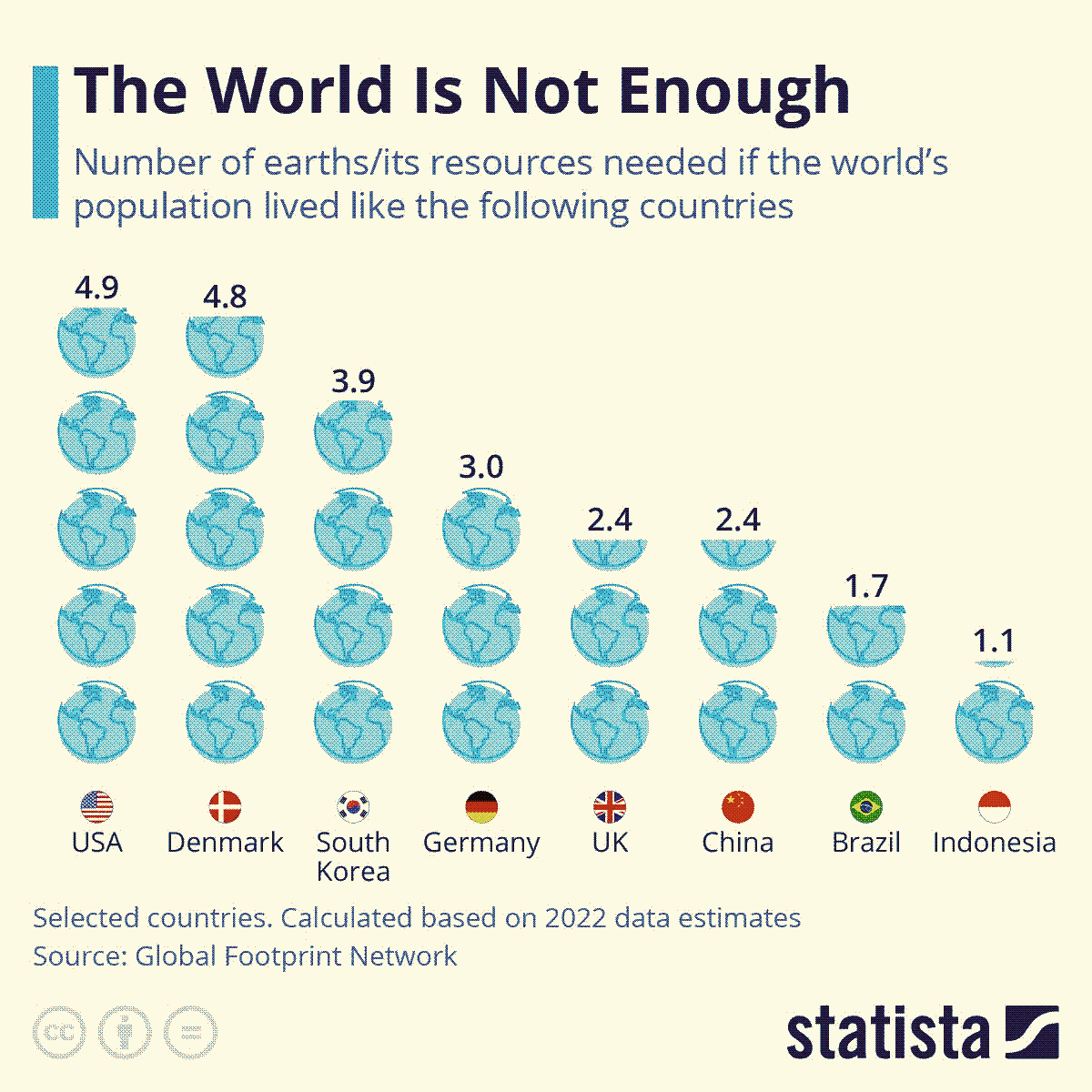
Let’s discuss some of the effects of our highly consumptive lifestyles. First, I’m sure I don’t have to explain climate change and the greenhouse effect to you. You know that burning fossil carbon (I don’t use the term fossil fuels, as it presupposes that we should think of these deposits as fuel), either to power cars, create electricity, or even to produce nitrogen to fertilize crops, contributes to the warming of our planet. Our global civilization is built on these fossilized remnants of ancient sunlight. We ourselves are the products of fossil carbon. Much of the food we eat is fertilized through its products. Transitioning away from using fossil carbon will not be possible without significant sacrifices and changes to our lifestyles. We have been sold a lie when it comes to the promises of electrification.
While it is true that solar panels, windmills, and other “green” energy are preferable to burning fossil carbon, they cannot entirely replace their use if we intend to continue living as we currently do. Nor are these forms of energy entirely renewable. While the sun and wind are practically infinite, the tools used to capture their energy output are not. Like with fossil carbon, the extraction of materials needed to build these tools require the destruction of habitat. Destruction is a pattern in this narrative that I will return to later. However, it is true that even with the growth of “buildable” energy (a more fitting term for renewables), we have still yet to reduce our consumption of fossil carbon. With the proliferation of highly consumptive technology like AI, we are likely to require far more energy in the future.
Of course, this is all happening as we breach 1.5°C warming for the first time, the threshold that the Paris Climate Agreement was supposed to keep us below. All the while, the rate of warming appears to be increasing due not only to our emissions, but also possibly the passage of certain tipping points, and, curiously, the reduction of some emissions. I won’t go into too much detail here. This is already getting kind of long, but I recommend reading some of the climate scientist, James Hansen’s work. However, I can touch on it briefly.
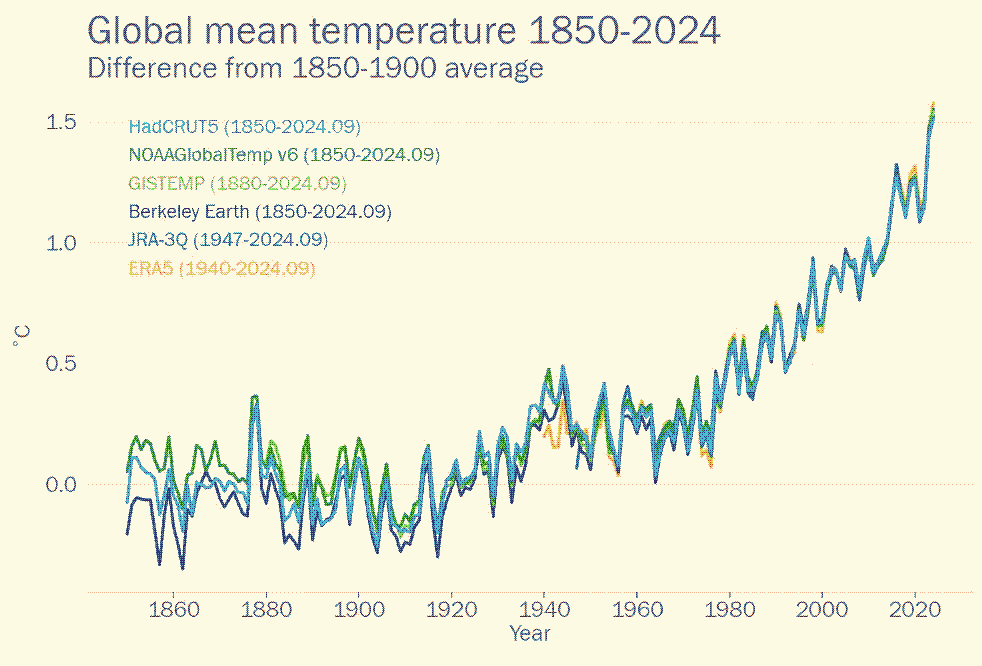
For example, there are numerous tipping points described by climate scientists. These are occurrences that are likely to happen should we pass a certain level of warming. We may have already passed some of these. Unfortunately, once triggered, these tipping points are likely irreversible, and they will contribute to more warming, regardless of whether we stop emitting carbon or not.
One example may explain a recent and alarming increase in atmospheric methane. It appears that our warming climate is beginning to thaw microbes. Once thawed, these microbes release methane into the atmosphere. While methane does not persist as long as carbon does (it degrades into carbon and water vapor, also greenhouse gases), it does contribute to many more times the warming of carbon. This is just one of many more tipping points described by scientists. We are headed towards many more. Google “AMOC collapse” for an especially alarming example that is predicted to happen within our lifetime.
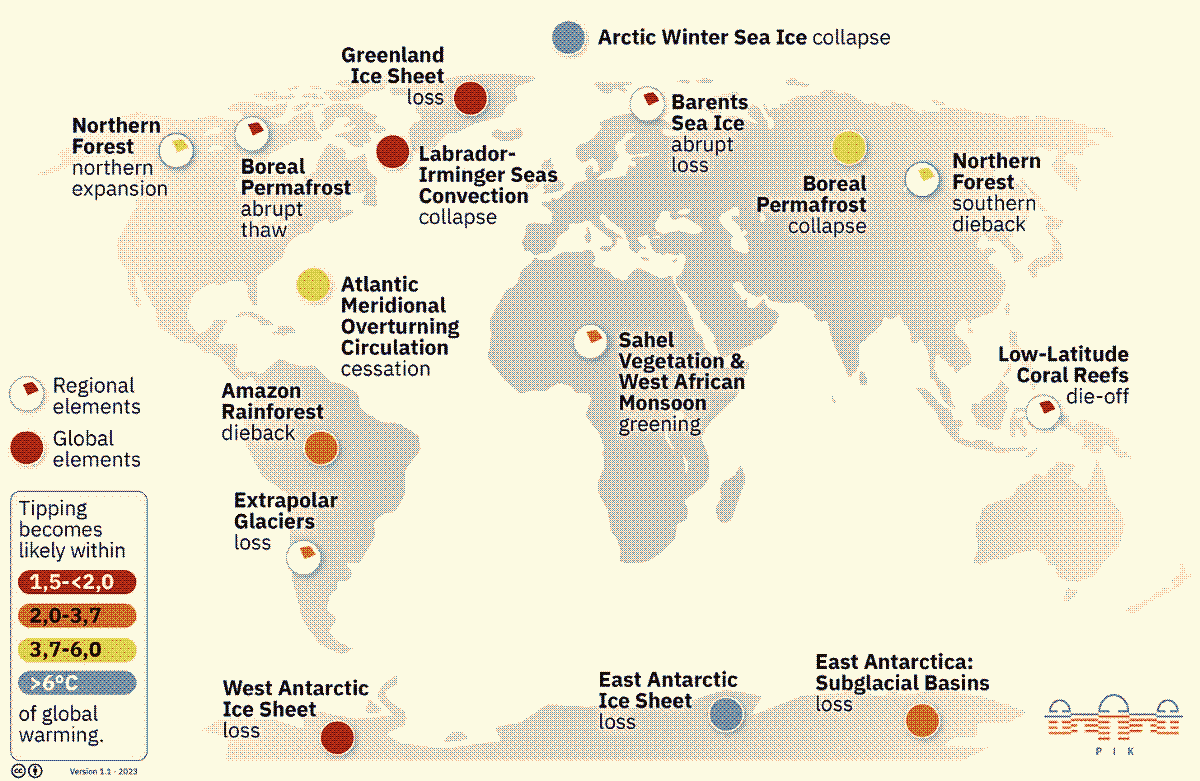
Likewise, we are also seeing an increase in warming due to a reduction in emissions. You see, some of the gases we emit, sulfur dioxide for example, actually help to mask some of the warming from carbon dioxide and other greenhouse gases. This is known as global dimming, and we saw this in action beginning a couple years ago when sulfur dioxide was banned in shipping fuels. The total amount of masking is believed to be between 0.5°C and 1°C.
Moreover, our oceans absorb over 90% of the excess heat trapped by greenhouse gases in our atmosphere. We are adding the equivalent of 5 atomic bombs worth of energy to our oceans every second. This warming is contributing to coral bleaching, species migration, extinctions, and even sea level rise, as warmer water both expands and melts ice.
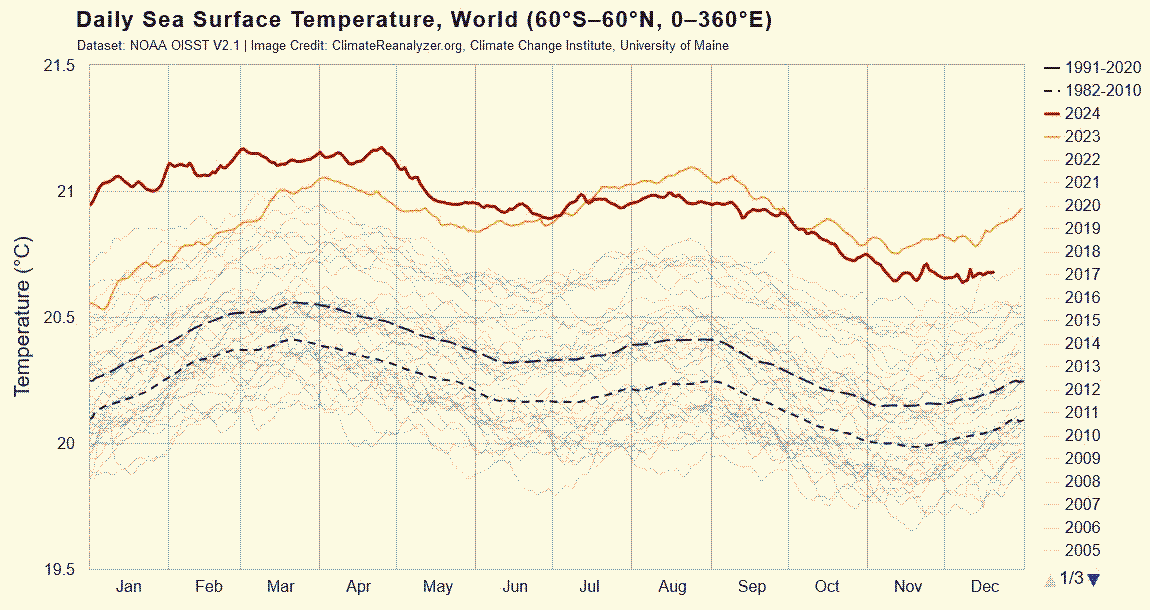
Now, let’s return to destruction. Humans displace and destroy the habitat of others to sustain our own gluttonous levels of consumption. For example, much of the deforestation happening in the Amazon is being done by farmers in order to raise cattle for meat production. Cattle themselves are sources of methane emissions. The clearing of the forests make matters worse, as doing so not only contributes to habitat destruction and extinctions, it removes invaluable carbon sinks (trees consume and take up carbon from the atmosphere) from our arsenal. In fact, warming is now reaching such a level that forests like the Amazon are beginning to transition into carbon emitters rather than carbon sinks. Forest fires are beginning to rival humanity in the amount of carbon dioxide they emit into the atmosphere each year.
Likewise, the destruction of animal habitat for human habitation and factory farming is one of the many factors contributing to what scientists have termed Earth’s 6th mass extinction. Nearly 70% of global biodiversity has been lost since 1970. Humans and our livestock now constitute 96% of the mammalian biomass currently alive, while poultry constitute 71% of avian biomass. Insect populations have been declining by nearly 2.5% per year, resulting in a 75% reduction over the past 50 years. These trends are not reversing. If we continue to live as we do, animal populations will continue to decline precipitously. I don’t know how much you know about mass extinctions, but I know you know that life is interconnected. The more extinctions, the more likely it is that other animals go extinct. It’s not hyperbole to say that we are currently triggering an event that could wipe out a majority of life on this planet. Would it happen in our lifetime? Not entirely, but it could happen in a rather short period of time given the timescales that mass extinctions typically follow.
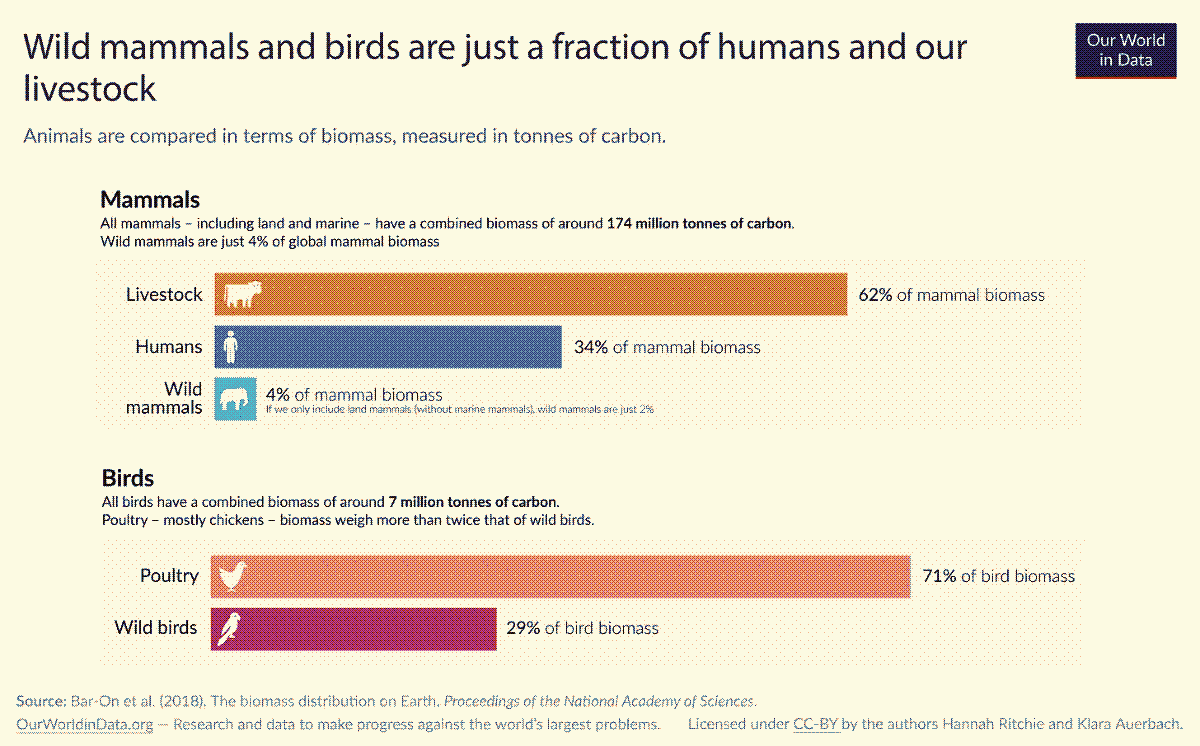
These deaths are not solely due to habitat destruction through factory farms or through the creation of cities and other human settlements. No, unfortunately, humanity thinks very little of the life that surrounds us. Many of our actions contribute to mass death. For example, our favorite method of transportation, the automobile, has a lot of blood on its tires. In addition to contributions to pollution and greenhouse gas emissions, cars cause death and injury to millions of people and billions of animals around the world each year. In fact, if we’re looking just at human deaths, since their creation, cars have contributed to the same number of deaths as both World Wars. This is to say, that there is very little about the current status quo, the way that we live, that doesn’t contribute to collapse.

There are of course other risks that rear their heads as our planet warms. For example, the brunt of the climate crisis will first be felt in the Global South. Poor countries that contributed very little emissions, especially of their own volition, will be hit the hardest by heat waves and other extreme weather events. This will exacerbate already high levels of immigration from the Global South into the Global North.
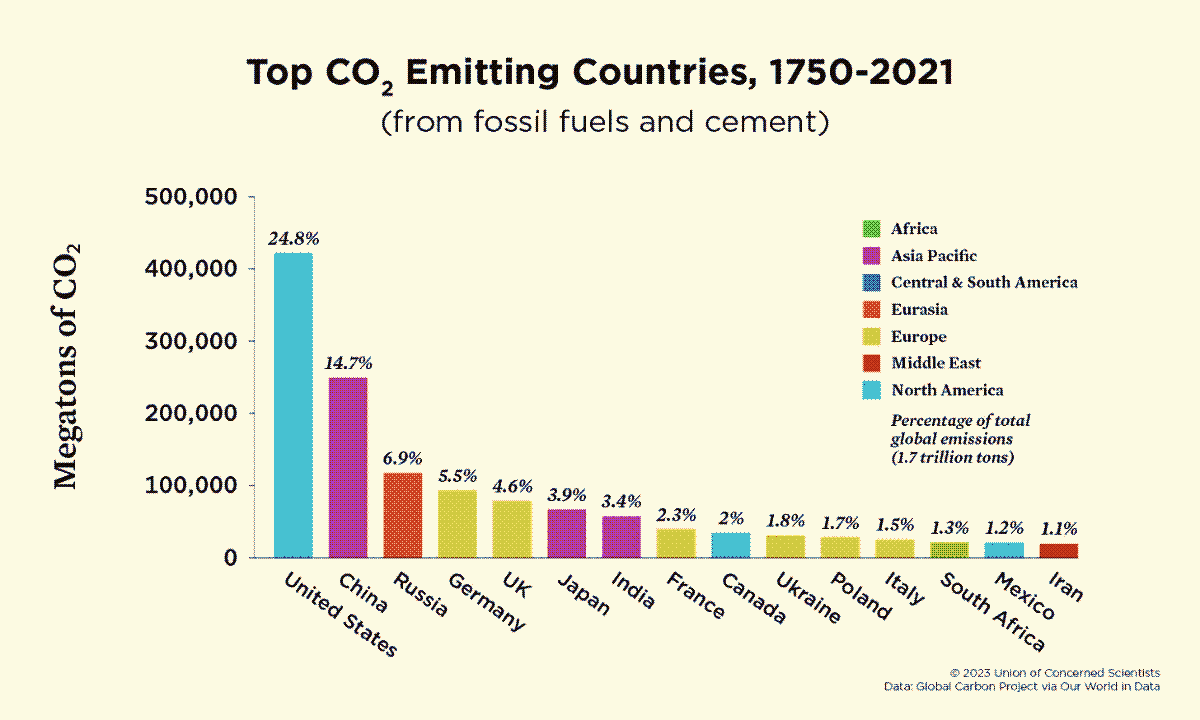
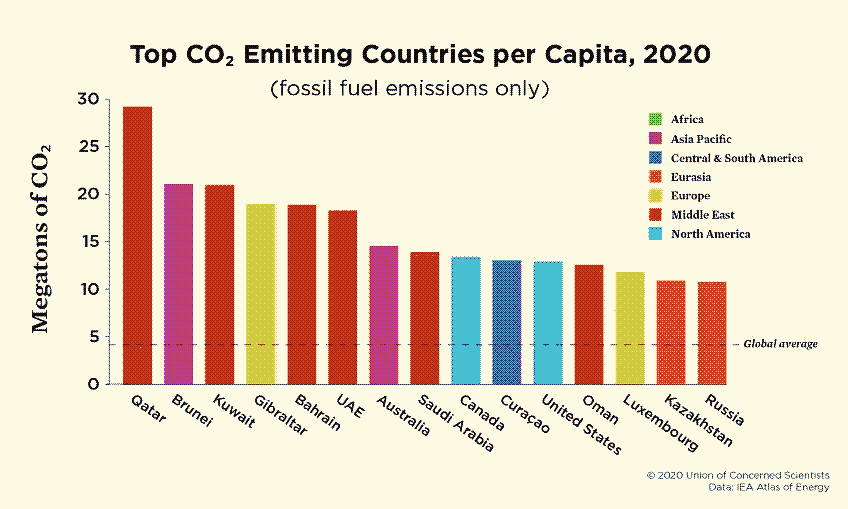
If the joint US-Israel genocide of the Palestinian people is anything to go by, Western nations will not hesitate to use deadly force in the event that millions are bearing down on their borders. The ease with which our society justifies the slaughter of brown people is stomach churning. We hold very little moral superiority over our ancestors. We’ve merely existed within a time of plenty. Once scarcity of food, water, and fertile land becomes commonplace, conflicts will become commonplace. The Bulletin of Atomic Scientists, an organization that has been tracking the possibility of “doomsday” since 1947, believes that we are closer to doomsday now than we have ever been, even when compared to the height of the Cold War.
Likewise, a warming planet increases the frequency and severity of pandemics by increasing the geographical range of vectors like mosquitoes and ticks. Moreover, many of the same actions that contribute to warming also add to these risks: destroying animal habitat, displacing wildlife, and forcing them into more interactions with humans and our livestock. In fact, our preferred method of raising said livestock, factory farming, creates an ideal breeding ground for viruses and other pathogens. We are already seeing alarming progress in H5N1 avian flu’s adaptation to mammals. After recently being discovered in cows and their milk, it is now infecting pigs and humans with close contact to livestock. Due to our government’s deference to capital, very little is being done to stop its spread. It may just be a matter of time before it turns into a pandemic. Our global society makes these events inevitable.
These aren’t all of our problems. For example, I neglected to mention the ubiquity of plastics (see, “We Are Not Being Honest Concerning the Threat Microplastics Pose to Life on This Planet”) and forever chemicals in our environment and the frankly cosmic level of horror that they represent for the continuation of life on this planet. I guess this is all sort of cosmic horror. We have meddled in systems beyond our grasp.
The question is, how long before we experience the impacts of these effects? The answer: we already are. For example, one aspect of our predicament, the climate crisis, will beat us down through less predictable, more frequent, and more severe, extreme weather events. No one has a timeline for when the cumulative damage from these events results in the collapse of civilization. Some regions will collapse sooner than others. Some have arguably already collapsed or are much further along in the process.
Personally, I stopped contributing more than the minimum to my 401k two years ago. If I could, I wouldn’t contribute anything. With what I know about climate change and its adjacent crises, I cannot imagine a future where that money will be accessible in 30 years. I’m not even certain I’ll be around in 30 years to collect given where our world is headed.
I will leave it here. I think this is probably not as brief an explanation as I originally set out to give. If you get this far, thanks for indulging me.
Two-reeler
Continue the Journey:
Articles:
- Richard Crim, The Crisis Report, “SubStack Index” - "A guide to [Crim's] Stack."
- Dr. James E. Hansen, "Communications, videos, scholarly publications, and popular publications from one of the world's leading climate experts."
- Patrick Miner et al., “Car harm: A global review of automobility's harm to people and the environment,” Journal of Transport Geography - “Summarises car-related harm including crashes, pollution, land use, and injustices.”
- Our World in Data, "Population Growth" - "Explore global and country data on population growth, demography, and how this is changing."
- Our World in Data, "Wild mammals make up only a few percent of the world’s mammals" - "Livestock make up 62% of the world’s mammal biomass; humans account for 34%; and wild mammals are just 4%."
- Union of Concerned Scientists, "Each Country's Share of CO2 Emissions" - "The wealthy nations of the world are responsible for most carbon emissions."
- Bulletin of the Atomic Scientists, "A moment of historic danger: It is still 90 seconds to midnight" - "Ominous trends continue to point the world toward global catastrophe."
- Dhont et al., Appetite, "The role of meat appetite in willfully disregarding factory farming as a pandemic catalyst risk" - "In two pre-registered studies early in the 2020 pandemic, we examined whether British adults fail to recognize factory farming in causing epidemics, and whether such dismissal represents motivated cognition."
- World Wildlife Foundation, "Catastrophic 73% decline in the average size of global wildlife populations in just 50 years reveals a ‘system in peril’" - "WWF’s flagship Living Planet Report details sharp declines in monitored wildlife populations with the steepest drops recorded in Latin America and the Caribbean (95%), Africa (76%) and Asia–Pacific (60%), followed by North America (39%) and Europe and Central Asia (35%)."
- Reuters, "The collapse of insects" - "The most diverse group of organisms on the planet are in trouble, with recent research suggesting insect populations are declining at an unprecedented rate."
Podcasts and Videos:
- Nate Hagens, The Great Simplification - “A podcast that explores the systems science underpinning the human predicament.”
- Rachel Donald, Planet: Critical - “Investigating why the world is in crisis.”
- Paul Beckwith - "Well known climate system science educator; joining the dots on abrupt climate change."
- Dr. Emily Schoerning, American Resiliency - "Do you want to know what America will look like in a warming world? This channel is your place for boiled-down climate forecasts in plain language."
- Climate Emergency Forum - "Join us for engaging, educational discussions about contributing factors to the climate crisis, abrupt climate change, loss of biodiversity as well as various components of climate systems."
- Michael Dowd (RIP) and Connie Barlow, Post-Doom Educational Videos and Conversations - “A foreboding sense of climate chaos, societal breakdown, and economic and ecological ‘doom’ is now widespread. Acknowledging our predicament and working through the stages of grief takes one only to the midpoint: acceptance."
- Maiya May, PBS Terra's Weathered - "Science Communicator Maiya May investigates why we have more extreme weather and natural disasters than ever before and teaches you how to prepare."
- PBS American Experience, “The Man Who Tried To Feed The World: A tale of good deeds and unintended consequences” - "The story of the man who would not only solve India’s famine problem, but would go on to lead a 'Green Revolution' of worldwide agriculture programs, saving countless lives. He was awarded the 1970 Nobel Peace Prize for his work but spent the rest of his life watching his methods and achievements come under increasing fire."
Books:
- Daniel Quinn, Ishmael - “A 1992 philosophical novel that examines the hidden cultural biases driving modern civilization and explores themes of ethics, sustainability, and global catastrophe."
- William R. Catton, Jr., Overshoot: The Ecological Basis of Revolutionary Change - "A calm but unflinching realist, Catton suggests that we cannot stop this wave - for we have already overshot the Earth's capacity to support so huge a load."
- Meadows et al., Limits to Growth: The 30-Year Update - "In 1972, three scientists from MIT created a computer model that analyzed global resource consumption and production. Their results shocked the world and created stirring conversation about global 'overshoot,' or resource use beyond the carrying capacity of the planet."